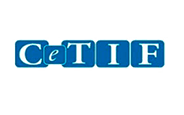Transforming the Financial Sector through Advanced Data Analytics
by Aparna Sasidharan

The financial industry thrives on data which shapes every decision from market trends to investment strategies. In today’s fast-paced and competitive landscape, the ability to analyse data swiftly and accurately is paramount. Traditionally, financial institutions have depended heavily on internal IT departments to develop customised reports, which has often frustrated financial professionals. This reliance on technical teams can delay timely information, hindering agile responses to market trends and investment opportunities.
In this data-driven world, organisations across various sectors increasingly rely on data analytics platforms to derive valuable insights and make informed decisions. They enable users to collect, process, and analyse vast amounts of data, transforming raw information into actionable knowledge.
The financial sector, in particular, faces the complexities of financial instruments, market dynamics, and stringent regulatory compliance, necessitating sophisticated analytical capabilities. As a result, there has been a significant adoption of data analytics tools. These tools drive efficiency and innovation, empowering users to create their own reports and dashboards. This shift reduces reliance on IT departments and fosters a more agile and self-sufficient environment.
The Imperative for Advanced Data Analytics
Traditional approaches often involved manual data preparation, tedious reporting processes, and limited visibility into key performance indicators (KPIs), leading to delays, errors, inefficiencies, excessive costs, and miscommunication between technical teams and business users. Key challenges include:
- Data Volume and Complexity: The rapid increase in both the volume and complexity of financial data has made traditional analysis methods inadequate.
- Legacy Systems and Data Silos: Outdated systems and fragmented data hinder integration and comprehensive analysis.
- Regulatory Requirements: Stringent regulations necessitate precise and timely reporting, challenging existing processes.
- Market Volatility: Rapid changes in market conditions demand agile decision-making supported by advanced analytics.
- Competitive Edge: Leveraging data for strategic insights and innovation is crucial for maintaining a competitive advantage.
- Poor Quality Data: Inconsistent data quality due to manual processes can lead to erroneous analysis and decisions.
To overcome these challenges, various data analytical tools and platforms are available, each offering unique capabilities, such as Microsoft Power BI, SAS, QlikView, Alteryx, and Tableau. Among these tools, Alteryx and Tableau have emerged as leading platforms, particularly in the financial sector.
Alteryx streamlines data ingestion, cleansing, and transformation, allowing analysts to focus on deriving insights rather than routine tasks. Its automation features enhance data accuracy and operational efficiency, significantly reducing the time required for data preparation. Tableau excels at data visualisation and exploration, offering an intuitive interface for creating interactive dashboards and reports. This facilitates data exploration and enhances the ability to communicate findings effectively. Together, they streamline data integration, ensure accuracy, and enable instant analysis.
Empowering Financial Institutions: Benefits and Impacts
The integration of advanced analytical tools brings substantial benefits to financial institutions, fostering trust with clients and regulators through reduced errors and discrepancies. Their benefits and impact extend across various financial functions:
Benefits
- Data Accuracy: Automation enhances data accuracy and reliability, reducing errors. For example, a leading financial services provider used these tools to cleanse and standardise data, ensuring precise insights.
- Operational Efficiency: These applications handle repetitive tasks, freeing up time for strategic work, while interactive visualisations enable in-depth data exploration. A financial services company improved client understanding and focused on client-centric services, enhancing accuracy and allowing staff to concentrate on risk management.
- Cost Reduction: Automation capabilities lower labour and reporting costs. An international firm achieved a 60% cost reduction by replacing outdated Excel-based systems with these streamlined processes.
- Time Saving: These analytical systems streamline data preparation, reporting, and analysis, significantly speeding up processes. An asset management firm reduced process completion time from two months to minutes by implementing these solutions.
- Empowered Decision Making: These data tools enhance forecast accuracy and real-time monitoring of KPIs and market trends, supporting data-driven decisions. A prominent asset management company used these solutions for swift, informed investment choices.
Impacts on Financial Functions
- Investment Management: Timely information is crucial in investment. These analytics solutions help professionals analyse market trends, evaluate performance, and identify opportunities. Portfolio managers can monitor key performance indicators and make data-driven decisions through interactive dashboards.
- Enhanced Risk Management: By integrating diverse data sources, financial institutions can create comprehensive risk profiles. These applications automate data preparation for stress testing and scenario analysis, while enabling interactive visualisation of risk metrics, improving decision-making and regulatory compliance.
- Compliance and Regulatory Adherence: The financial industry is subject to a complex regulatory environment. These data analytics platforms streamline report generation, data accuracy, and audit trails which manage compliance more effectively.
- Customer Relationship Management (CRM): Understanding customer behaviour is essential for satisfaction and loyalty. These analytical tools enable the analysis of customer data to identify segments, preferences, and churn risks, facilitating targeted marketing, improved service, and enhanced customer experience.
- Fraud Detection: Financial institutions are constantly under threat from fraudsters. These data platforms can help detect fraudulent activities by analysing transaction patterns and identifying anomalies. By building predictive models, institutions can proactively prevent fraud and protect their customers.
Conclusion
As financial markets continue to evolve, the integration of advanced analytical tools like Alteryx and Tableau has become indispensable for financial institutions aiming to stay competitive. These platforms not only enhance operational efficiency and drive innovation but also play a crucial role in fund administration by enabling organisations to respond swiftly to client reporting requirements. By automating data collection and report generation, institutions can ensure timely and accurate reporting, which is essential in meeting regulatory standards and client expectations.
Moreover, the capabilities of data mining offered by these platforms allow financial institutions to extract valuable insights from vast datasets, improving client services and sales strategies. Understanding client preferences and behaviours enables organisations to tailor their offerings, enhancing customer satisfaction and loyalty.
Despite the evident benefits, many institutions are not fully leveraging these capabilities. To realise their potential, financial organisations should focus on improving adoption and proficiency among their teams by investing in comprehensive training and integrating them into existing workflows. Building a data-driven culture and providing ongoing support are essential for maximising capabilities, leading to more efficient operations, superior customer-focused insights, and ultimately, a competitive advantage in the dynamic financial landscape.
Share this article:










